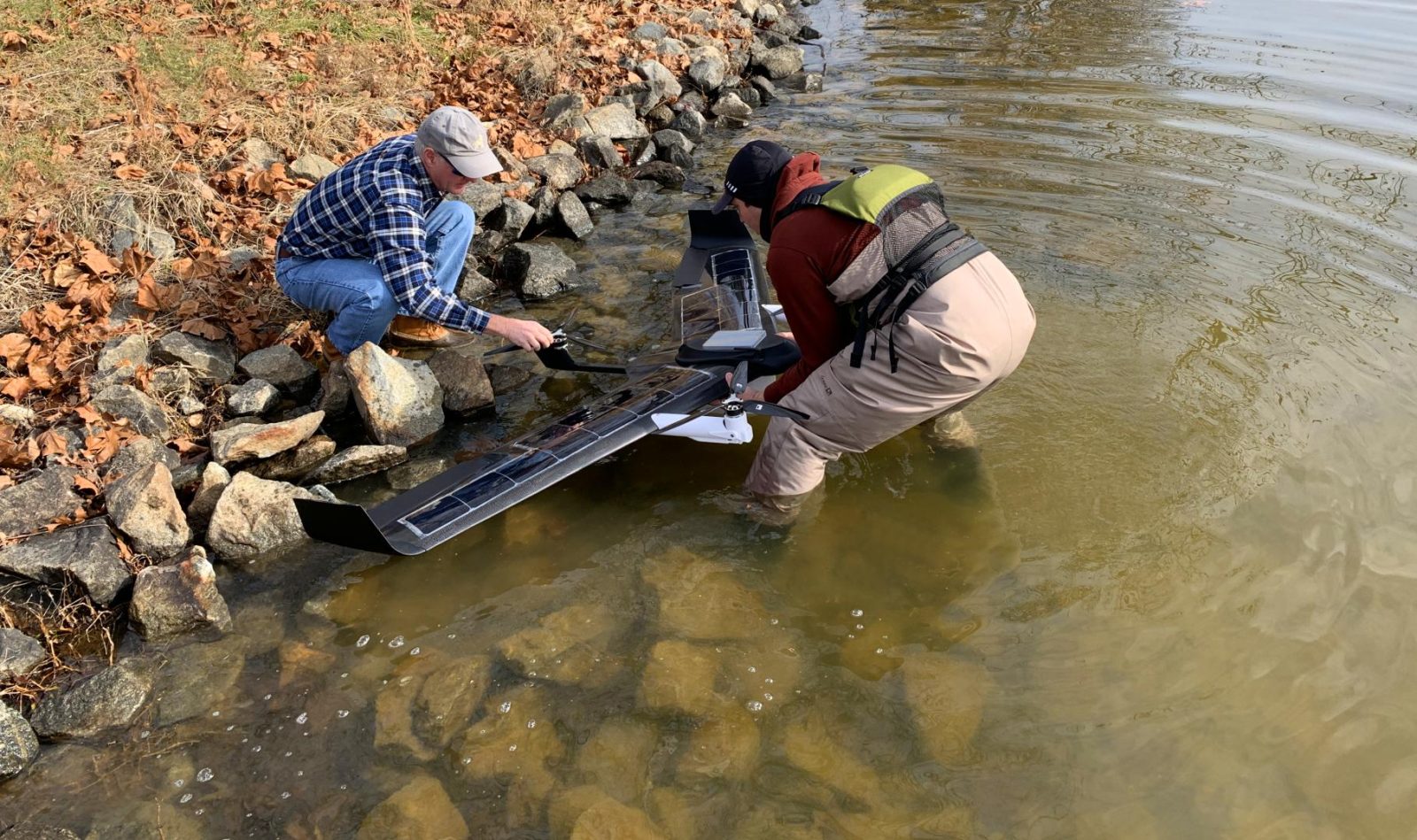
The prototype of a new drone capable of long-distance surveillance operations over oceans has been revealed by the MITRE corporation, which says the 3D printed craft can recharge itself during extended flights using solar panels on its wings.
MITRE said it had created its Hopper drone at the request of the Navy’s Office of Naval Research. Developed in a mere 24 months, the craft is primarily designed for reconnaissance and intelligence gathering missions. However, once advanced through testing and production phases, it will also be available for non-military oceanic applications including search and rescue, monitoring for illicit activity like illegal fishing, and detecting unfolding meteorological events.
In announcing its new drone, MITRE asked what at first glance seems to be a nonsensical question: “How does a small drone launched from San Diego get all the way to Hawaii without human intervention?”
It turns out Hopper is designed to do just that by flying for extended periods of time, powered by solar recharging as it does so or during rest stops while floating on the surface of water.
In addition to its long range capacities, the MITRE drone was conceived using computer-aided design and advanced simulation software, permitting rapid iteration of concepts until ideal options were chosen. Those including production capabilities using advanced but low-cost 3D printing tech. The flying-wing shape bears some resemblance to the B-2 Stealth bomber – apart from the telltale vertical rotors and energy-providing solar panels.
The result is a military-designed drone that can operate autonomously within shifting ocean environments, carrying a range of lower-power passive sensors and using easily accessible commercial electronic systems.
Given the vast areas that will need to be covered during those missions, MITRE’s Hopper drone is expected to be deployed in swarms. Onboard tech will make those capable of reacting as a group during to avoid zones where weather conditions risk becoming a threat to their mission, or very existence.
“We’re working to evolve Hopper with expanded payload capacity, longer flight duration, and shorter times between recharges — to create an even more powerful platform,” says MITRE project group leader Conor Mahoney, who notes the cost and safety advantages of using the drone in situations that traditionally require large human deployments. “This technology works primarily to augment existing maritime surveillance platforms. Where normally you’d have to risk a crewed asset or an expensive uncrewed asset to maintain cognizance over a wide ocean area, Hopper can do so at a fraction of the cost—and free up those other assets.”
FTC: We use income earning auto affiliate links. More.



Comments